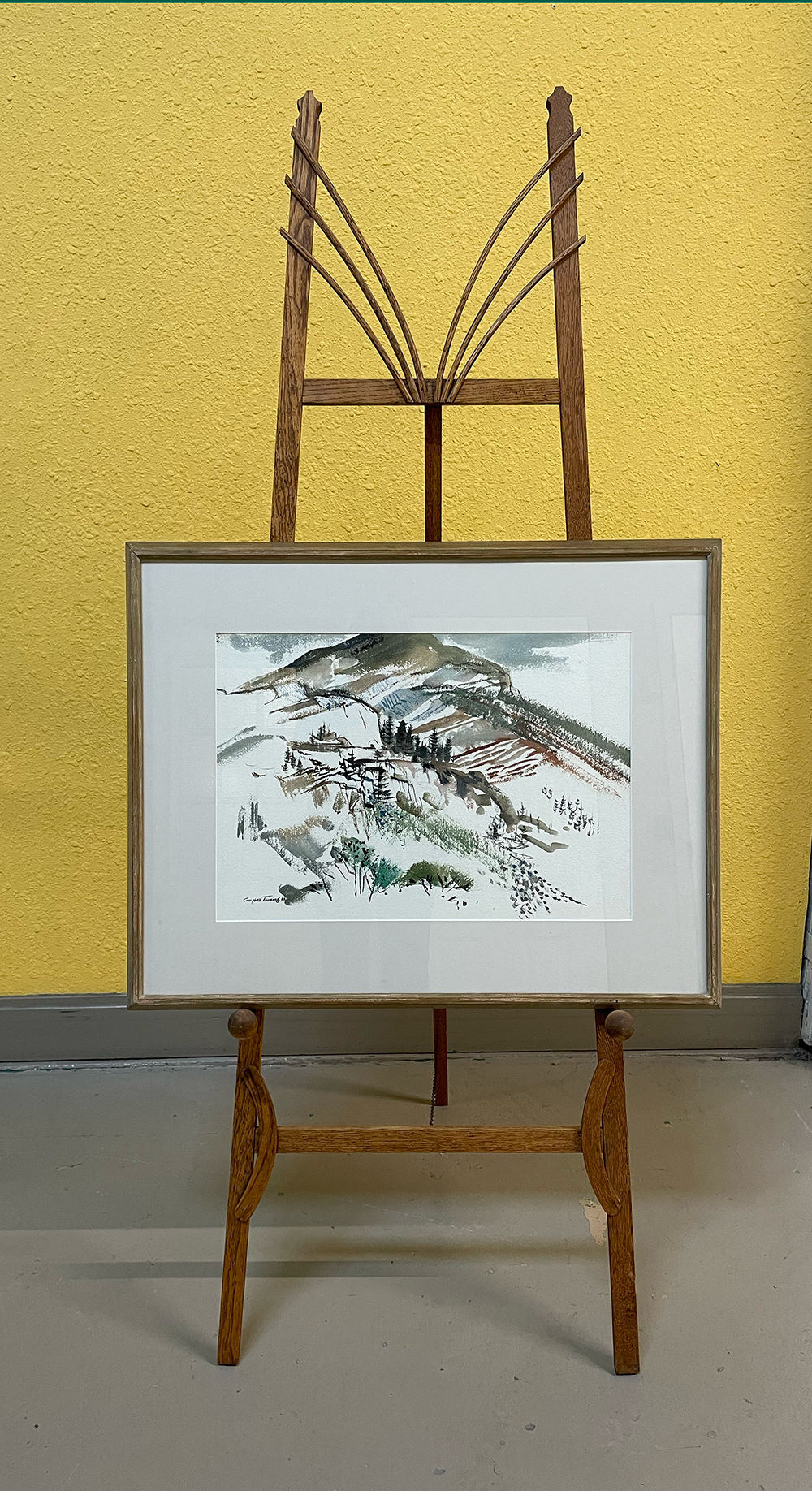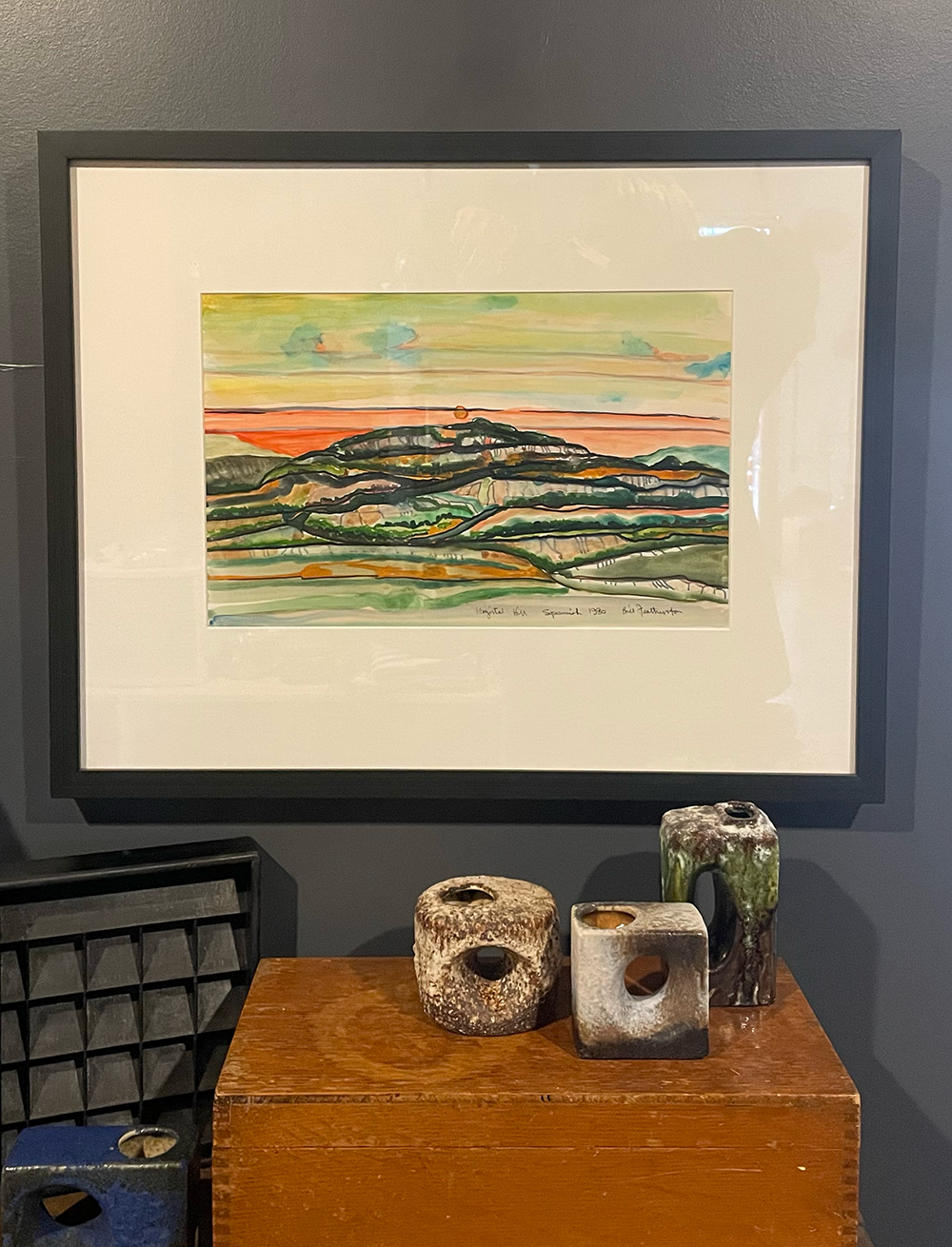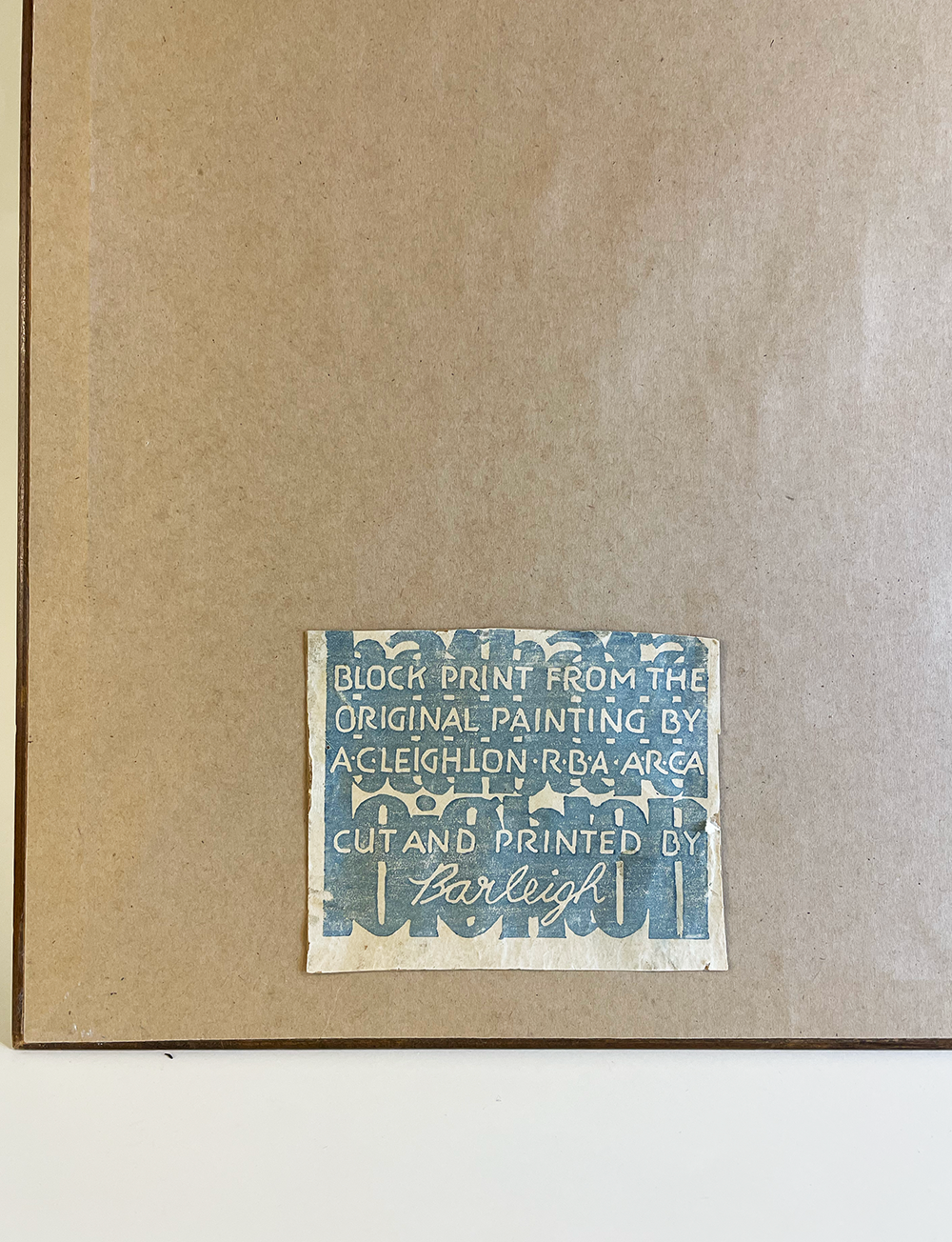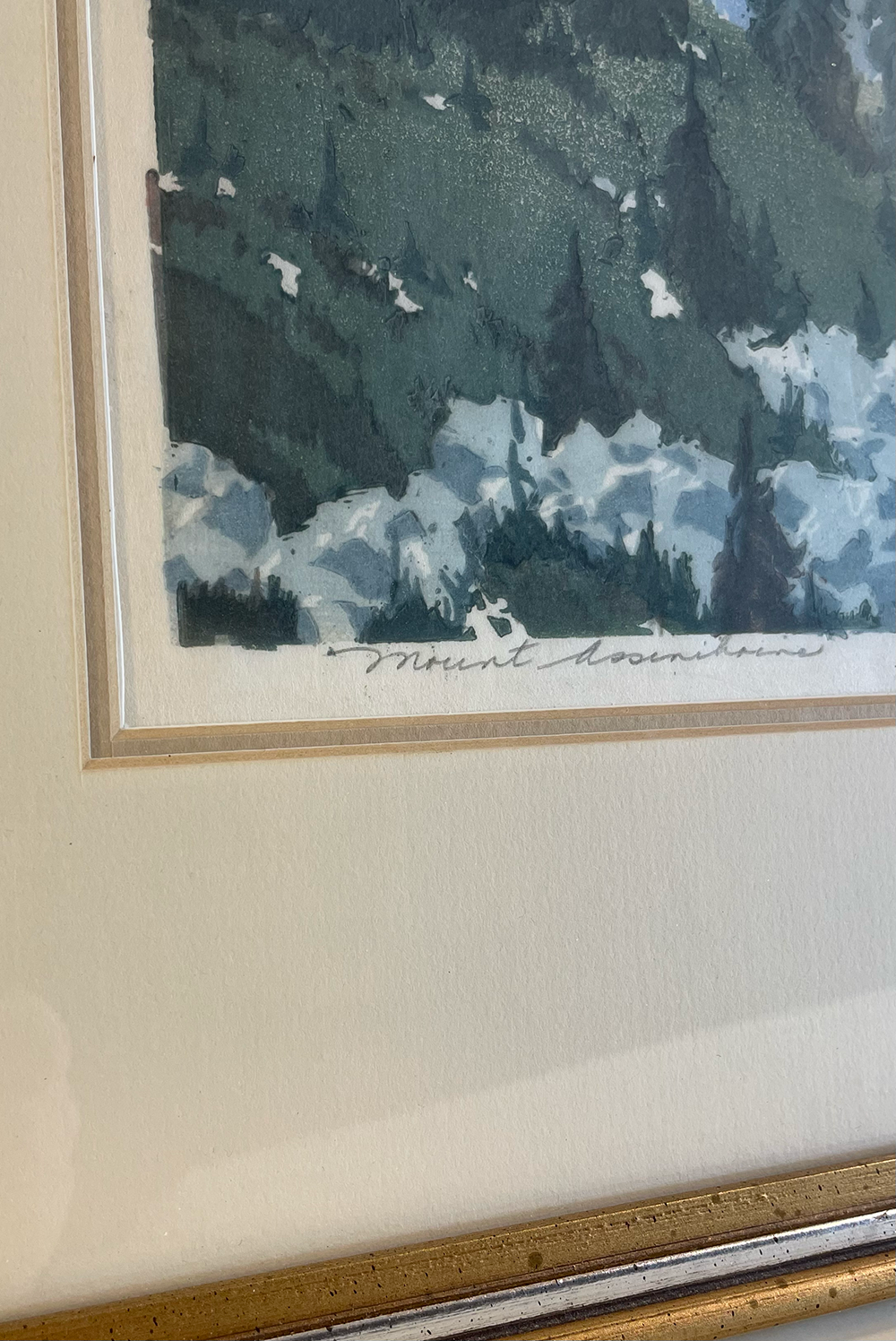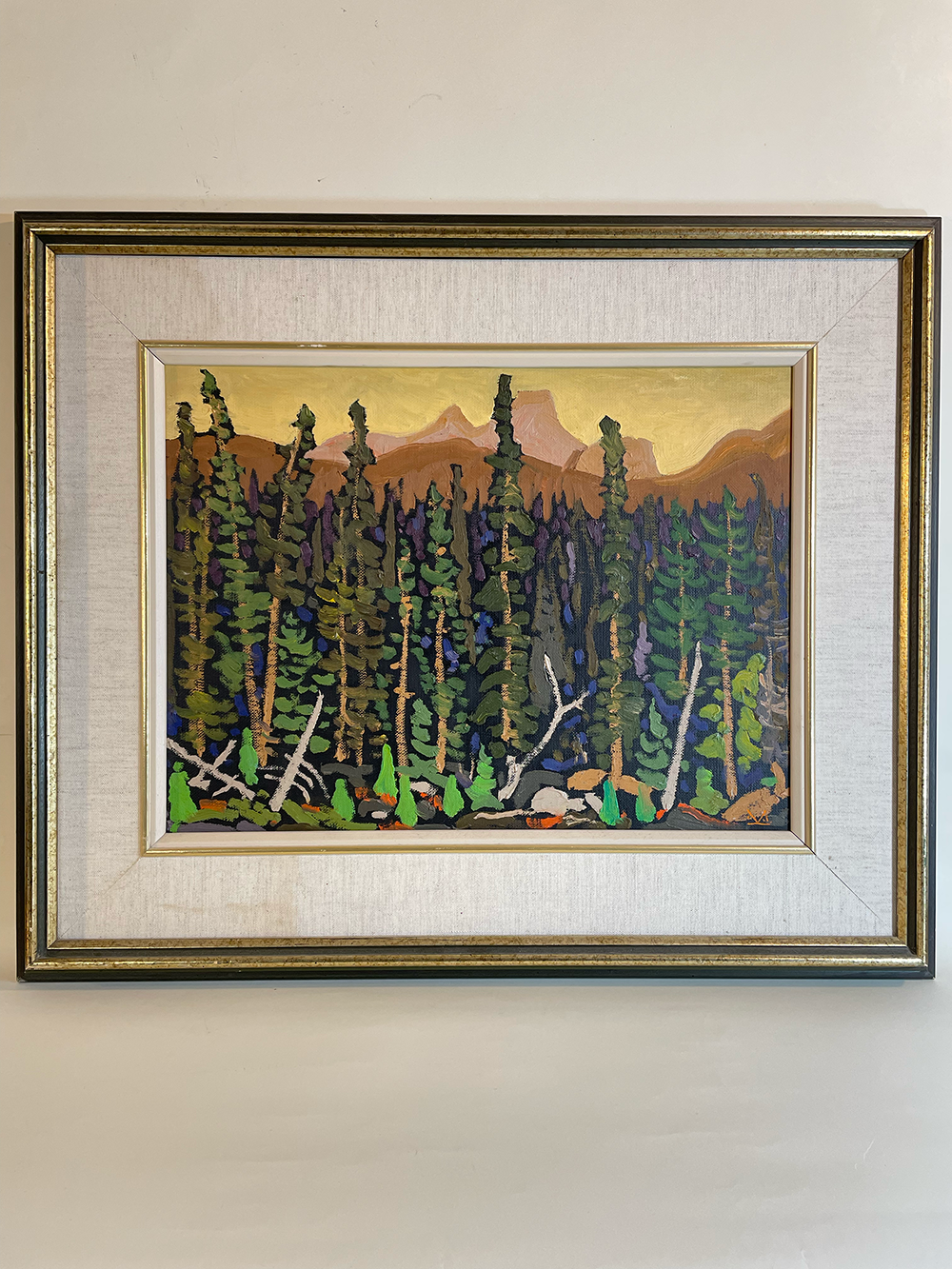 Image 1 of 6
Image 1 of 6

 Image 2 of 6
Image 2 of 6

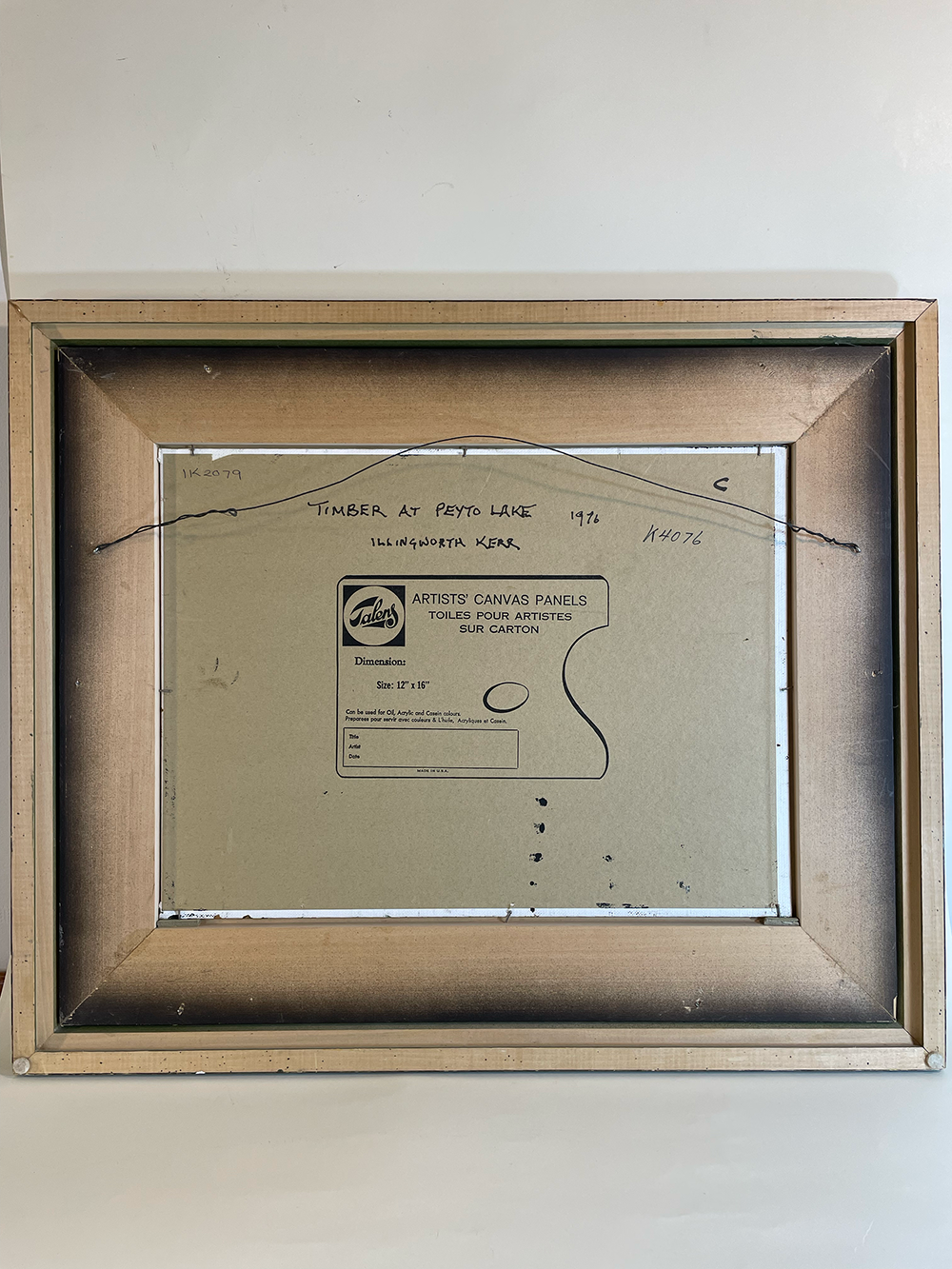 Image 3 of 6
Image 3 of 6

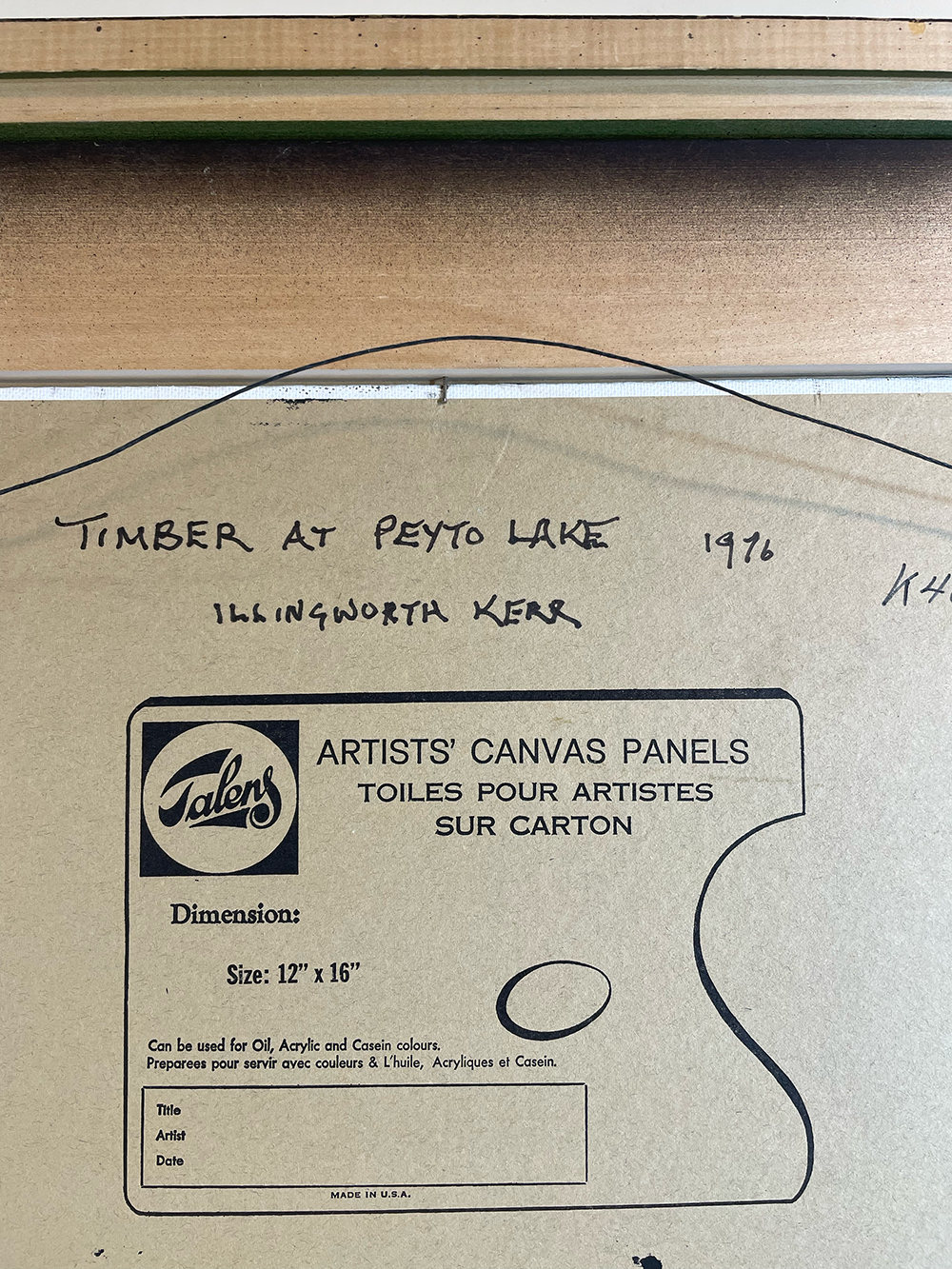 Image 4 of 6
Image 4 of 6

 Image 5 of 6
Image 5 of 6

 Image 6 of 6
Image 6 of 6







Illingworth Kerr, oil on canvasboard, Timber at Peyto Lake 1976
“Timber at Peyto Lake”, a brilliant oil on canvasboard painting by Illingworth Kerr, measures 19” x 23” in the frame, holding a 12” x 16” board.
Monogrammed on the lower right, and titled and inscribed on the reverse, this lovely scene dates to later in Kerr’s life, 1976.
The painting is in excellent condition. The frame is original and has some slight staining lower left of the cloth insert; see photo.
Peyto Lake is located in Banff National Park, Alberta.
Illingworth Holey Kerr (“Buck”), celebrated for his vibrant depictions of the Alberta and Saskatchewan foothills, holds the distinction of being the prairies' first professional locally-born artist. He was born in Lumsden, Saskatchewan, in 1905.
Initially, his style was grounded in representational art with a strong emphasis on design. However, a transformative course at the Hans Hoffman School of Fine Art in 1955 spurred a shift towards abstraction. Kerr's artistic vision expanded to encompass the works of Franz Marc, Pablo Picasso, and Georges Braque, as well as the compelling totem forms found in Canadian, African, and Medieval art. While landscapes and animal subjects remained his forte, he also ventured into semi-abstract symbolic compositions.
Born in Lumsden, Saskatchewan, Kerr's artistic journey began under the encouragement of his mother, an amateur watercolourist. Formal training followed at the Central Technical School in 1924 and the Ontario College of Art, where he studied under renowned artists Arthur Lismer, J.E.H. MacDonald, Frederick Varley, and J.W. Beatty.
Returning to Saskatchewan in 1928, Kerr established a studio, financing his art with various odd jobs. The Depression pushed him to England in 1936, where he worked on documentary films and studied art. He then moved to Scotland, writing and creating Canadian life dioramas for the Empire Exhibition.
Kerr returned to Montreal in 1939, preparing maps for the New York World’s Fair. He then joined the faculty of the Vancouver School of Art in 1945, and published his autobiography, Gay Dogs and Dark Horses, in 1946. In 1947, he became art director at the Provincial Institute of Technology and Art in Calgary, leading the institution for 20 years.
A 1960 Canada Council fellowship allowed Kerr to travel and expand his artistic horizons. Exhibitions of his work followed, including shows in Alberta and Eastern Canada.
Kerr was an active member of the British Columbia Society of Artists and the Alberta Society of Artists, and served as head of the Alberta College of Art. His works are held in prestigious collections, including the Norman Mackenzie Art Gallery, the Allied Art Centre, and the National Gallery of Canada. In 1983, he was awarded the Order of Canada in recognition of his significant contributions to Canadian art.
Illingworth Kerr died in Calgary, January 6, 1989.
“Timber at Peyto Lake”, a brilliant oil on canvasboard painting by Illingworth Kerr, measures 19” x 23” in the frame, holding a 12” x 16” board.
Monogrammed on the lower right, and titled and inscribed on the reverse, this lovely scene dates to later in Kerr’s life, 1976.
The painting is in excellent condition. The frame is original and has some slight staining lower left of the cloth insert; see photo.
Peyto Lake is located in Banff National Park, Alberta.
Illingworth Holey Kerr (“Buck”), celebrated for his vibrant depictions of the Alberta and Saskatchewan foothills, holds the distinction of being the prairies' first professional locally-born artist. He was born in Lumsden, Saskatchewan, in 1905.
Initially, his style was grounded in representational art with a strong emphasis on design. However, a transformative course at the Hans Hoffman School of Fine Art in 1955 spurred a shift towards abstraction. Kerr's artistic vision expanded to encompass the works of Franz Marc, Pablo Picasso, and Georges Braque, as well as the compelling totem forms found in Canadian, African, and Medieval art. While landscapes and animal subjects remained his forte, he also ventured into semi-abstract symbolic compositions.
Born in Lumsden, Saskatchewan, Kerr's artistic journey began under the encouragement of his mother, an amateur watercolourist. Formal training followed at the Central Technical School in 1924 and the Ontario College of Art, where he studied under renowned artists Arthur Lismer, J.E.H. MacDonald, Frederick Varley, and J.W. Beatty.
Returning to Saskatchewan in 1928, Kerr established a studio, financing his art with various odd jobs. The Depression pushed him to England in 1936, where he worked on documentary films and studied art. He then moved to Scotland, writing and creating Canadian life dioramas for the Empire Exhibition.
Kerr returned to Montreal in 1939, preparing maps for the New York World’s Fair. He then joined the faculty of the Vancouver School of Art in 1945, and published his autobiography, Gay Dogs and Dark Horses, in 1946. In 1947, he became art director at the Provincial Institute of Technology and Art in Calgary, leading the institution for 20 years.
A 1960 Canada Council fellowship allowed Kerr to travel and expand his artistic horizons. Exhibitions of his work followed, including shows in Alberta and Eastern Canada.
Kerr was an active member of the British Columbia Society of Artists and the Alberta Society of Artists, and served as head of the Alberta College of Art. His works are held in prestigious collections, including the Norman Mackenzie Art Gallery, the Allied Art Centre, and the National Gallery of Canada. In 1983, he was awarded the Order of Canada in recognition of his significant contributions to Canadian art.
Illingworth Kerr died in Calgary, January 6, 1989.
“Timber at Peyto Lake”, a brilliant oil on canvasboard painting by Illingworth Kerr, measures 19” x 23” in the frame, holding a 12” x 16” board.
Monogrammed on the lower right, and titled and inscribed on the reverse, this lovely scene dates to later in Kerr’s life, 1976.
The painting is in excellent condition. The frame is original and has some slight staining lower left of the cloth insert; see photo.
Peyto Lake is located in Banff National Park, Alberta.
Illingworth Holey Kerr (“Buck”), celebrated for his vibrant depictions of the Alberta and Saskatchewan foothills, holds the distinction of being the prairies' first professional locally-born artist. He was born in Lumsden, Saskatchewan, in 1905.
Initially, his style was grounded in representational art with a strong emphasis on design. However, a transformative course at the Hans Hoffman School of Fine Art in 1955 spurred a shift towards abstraction. Kerr's artistic vision expanded to encompass the works of Franz Marc, Pablo Picasso, and Georges Braque, as well as the compelling totem forms found in Canadian, African, and Medieval art. While landscapes and animal subjects remained his forte, he also ventured into semi-abstract symbolic compositions.
Born in Lumsden, Saskatchewan, Kerr's artistic journey began under the encouragement of his mother, an amateur watercolourist. Formal training followed at the Central Technical School in 1924 and the Ontario College of Art, where he studied under renowned artists Arthur Lismer, J.E.H. MacDonald, Frederick Varley, and J.W. Beatty.
Returning to Saskatchewan in 1928, Kerr established a studio, financing his art with various odd jobs. The Depression pushed him to England in 1936, where he worked on documentary films and studied art. He then moved to Scotland, writing and creating Canadian life dioramas for the Empire Exhibition.
Kerr returned to Montreal in 1939, preparing maps for the New York World’s Fair. He then joined the faculty of the Vancouver School of Art in 1945, and published his autobiography, Gay Dogs and Dark Horses, in 1946. In 1947, he became art director at the Provincial Institute of Technology and Art in Calgary, leading the institution for 20 years.
A 1960 Canada Council fellowship allowed Kerr to travel and expand his artistic horizons. Exhibitions of his work followed, including shows in Alberta and Eastern Canada.
Kerr was an active member of the British Columbia Society of Artists and the Alberta Society of Artists, and served as head of the Alberta College of Art. His works are held in prestigious collections, including the Norman Mackenzie Art Gallery, the Allied Art Centre, and the National Gallery of Canada. In 1983, he was awarded the Order of Canada in recognition of his significant contributions to Canadian art.
Illingworth Kerr died in Calgary, January 6, 1989.



